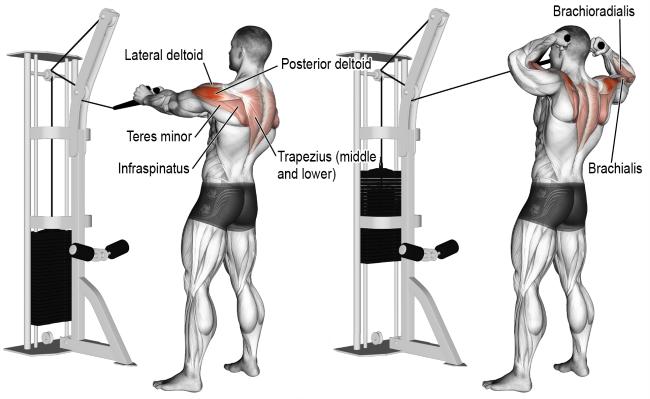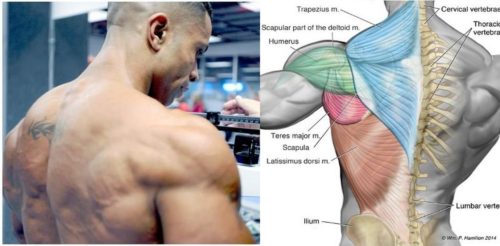When you start going to the gym, you feel really powerful and you can crank out bench presses three days a week. Doing an entire hour of different curls and extentions is something you just do, and no exercise seems too difficult. However, the hype quickly fades out and your progress grinds to a halt, which will often demotivate you and frustrate you.
In extreme cases, there can be occurrences of injuries or unknown pain anywhere in your body. When you observe the rest of your gym friends though, you will find that the really big and strong people train in a different manner than you.
These guys take care of their workout routines and structure them in the best possible way. Also, they switch up their intensity and train every single muscle instead of just the most impressive ones. Some of them even do exercises to warm up, prevent injury and for structural balance, not even to improve some of their muscles. Sounds boring, but it isn’t and you should pay attention.
Face pulls are the latest godsend in the powerlifting world, but also for everyone else since over time, this exercise has become popular with all lifters instead of just professionals. If your shoulders are too developed because of your poor routine construction skills, face pulls should be your #1 interest. It coordinates and conditions your rear deltoid muscles, your rhomboids and your external rotators, which means it can bring your lifting back to life. Also, it will make your posture less similar to that of a Neanderthal, so pay attention and do it when you need to. There is a catch though – you need to have the perfect form while performing this exercise, unlike the millions that are miraculously uninjured after doing it with such poor form. Face pulls are not something that will bolster your ego, but they will help none the less. Here is how to do it.
Find a pulley station and set it around your chest level. Attach a rope to it.
Grab the rope by both ends, holding a pronated (overhand) grip.
Take a step back and hold a staggered stance, with one foot forward. Bend your knees a little bit and outstretch your arms so that you’re supporting the weight with nothing but your arm muscles.
Have your friend drag their fingers along your spine until they reach the mid-back height, which will remind you to only use the upper back for this exercise.
Retract your shoulder blades until you squeeze your partner’s finger with the scapulae. Pull the center of the rope mildly towards your face as if you wanted to pull the rope apart, not just towards you.
Pull the rope towards your face and rotate your palms externally so that your knuckles are pointed upwards at the end.
Hold for a second at the zenith of the movement and then calmly lower the rope back into position.

Also, here are some tips to help you do this exercise even better.
Don’t put too much weight on the machine. If you do, you’ll be using your lower-back muscles to lift and you don’t want that. It makes your exercise useless and it opens you up to injuries.
Don’t push your head forward. It shortens your range of motion and defeats the purpose of the exercise.
Don’t drop your elbows. When your shoulders, elbows and wrists are in a straight line, your upper-back muscles are placed under tension. When you drop them into a low row position, that tension goes to your lats instead.
Don’t pump as fast as you can. You need a slow tempo that you can control with 100% efficiency, even if you see other people doing them quickly.
Get a partner. If you can’t, film your set and see what you look like from the side. This will help you fix any problems with your form.
Vary your grips. Hartman and Robertson claimed in an article that an underhand grip would be more effective than an overhand grip, but if you feel ready, try them both and see what suits you better.
Stretch your pec minor between sets. Use a normal doorway pec stretch, nothing fancy.
Finally, know that this is what people in the gym want to read and to train, so this is why all monthly muscle magazines put out arm training and bench press articles every chance they get. However, the most important thing is to know what you want and what you need are two different things, and what you need always takes priority simply because it has logic behind it. If you’re an average gym Joe, I suggest you think about what you need in your workout.



Post your comment